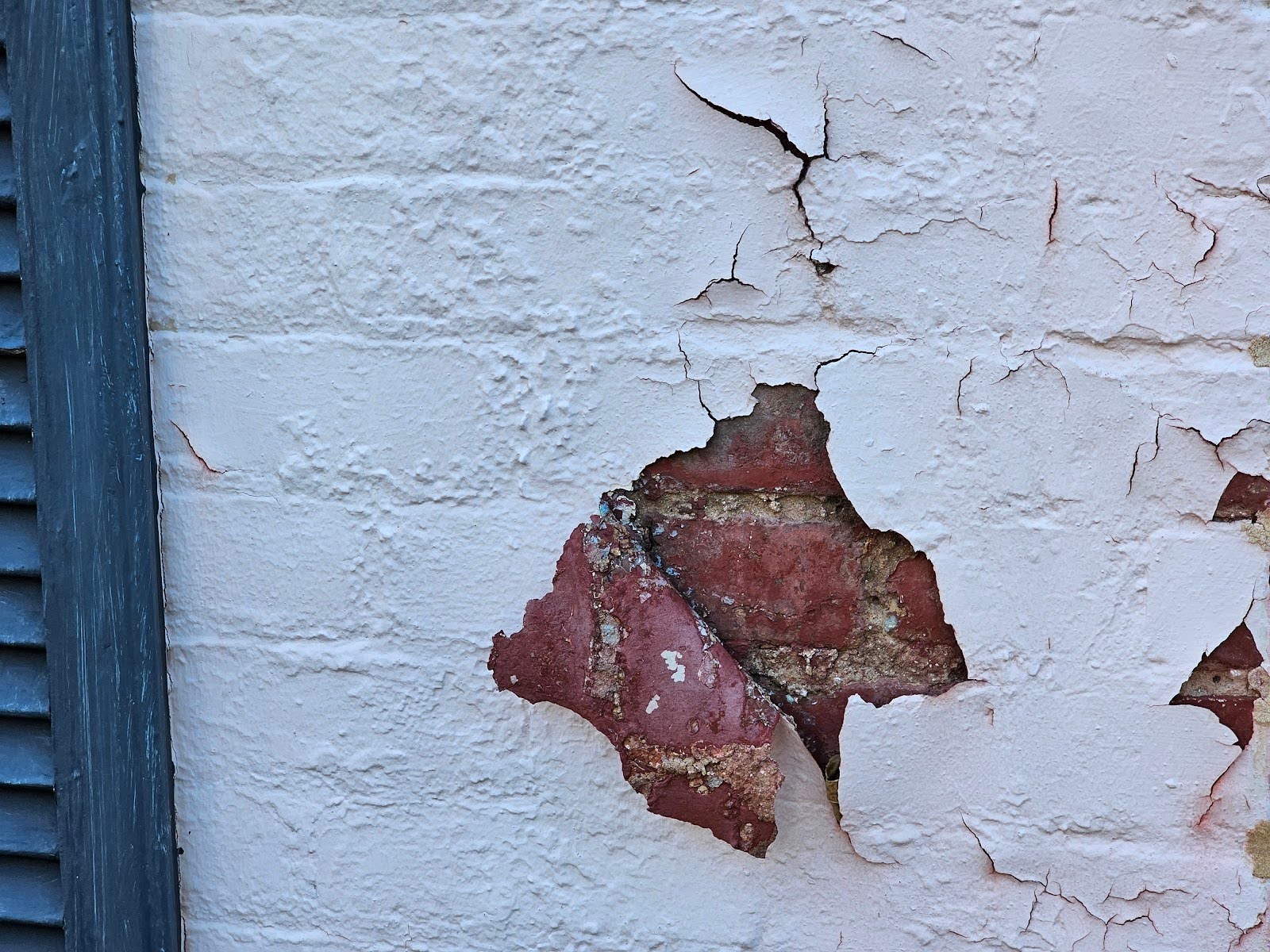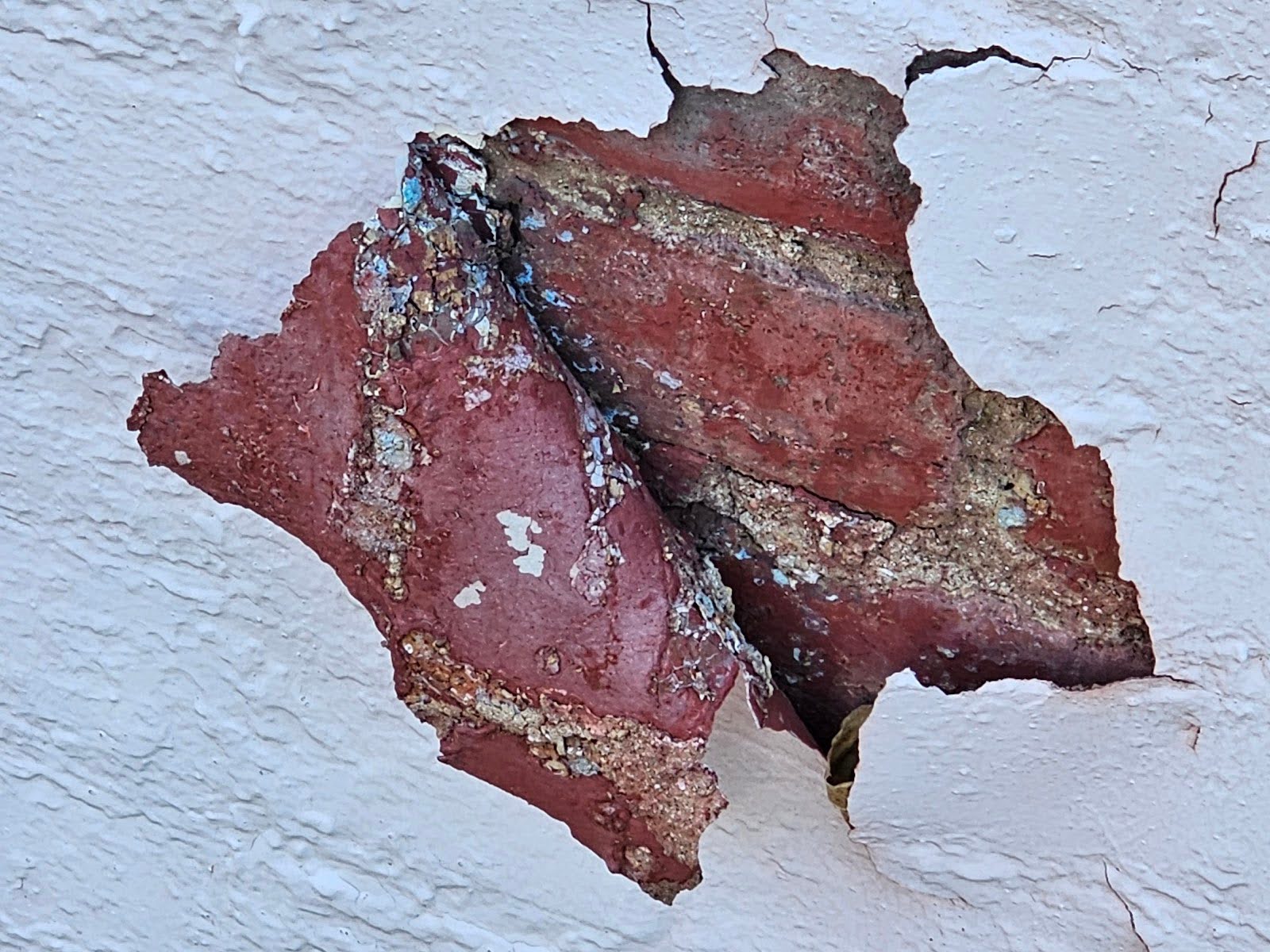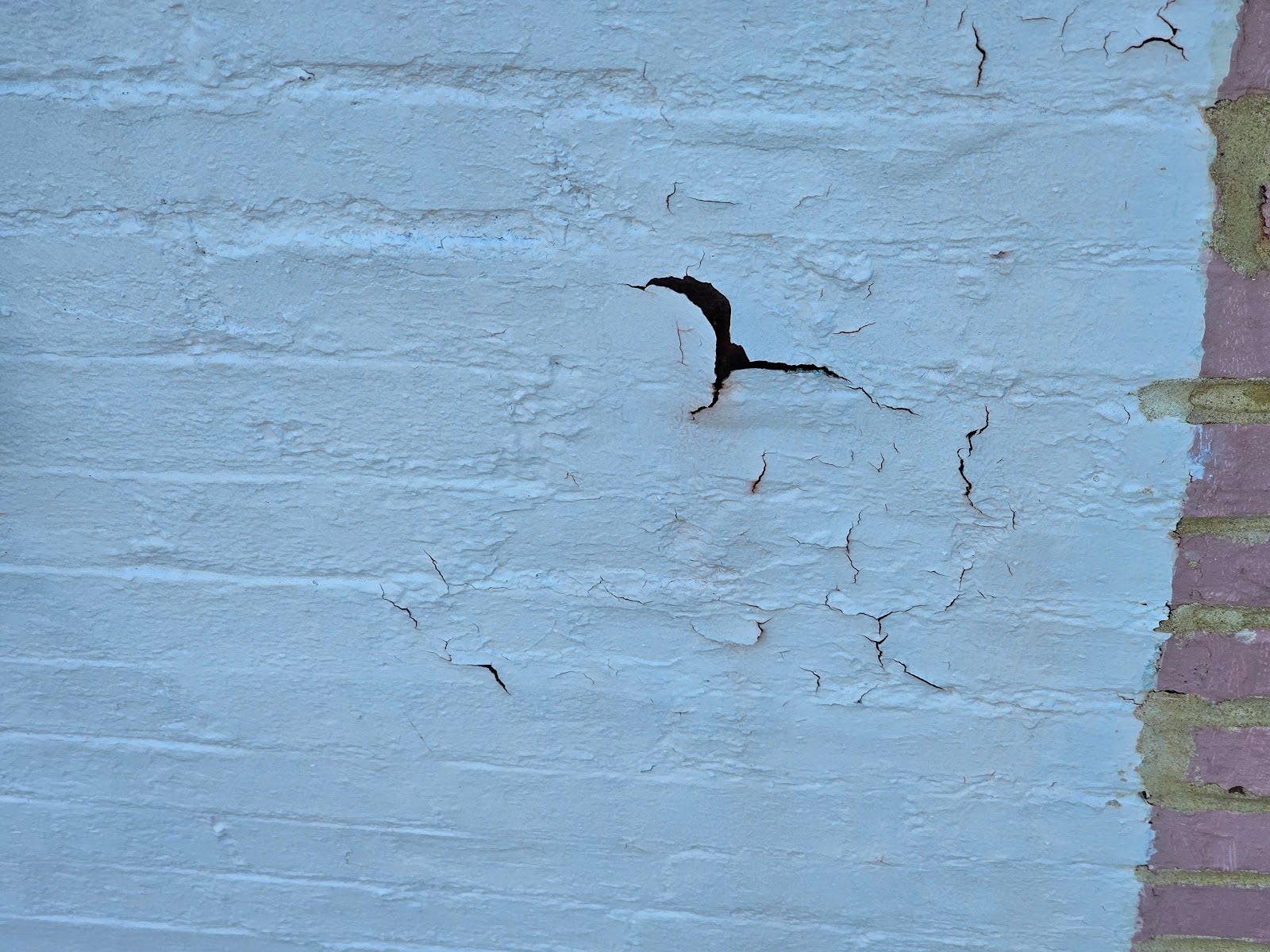To Paint Historic Brick or Not
It’s been an ongoing debate about whether it’s okay to paint historic brick or whether it should remain unpainted. This argument does not have a clear verdict and there are many arguments for both sides. Preservation experts often differ in their views on the issue. We’ll also state here, (SPOILER ALERT), that as this article examines the different sides of the debate, we have strong opinions but no clear final verdict, because it’s a complicated topic. This story, too, unfortunately, ends in a cliffhanger.
We consider one of the National Park Service to be one of the authorities in the area of historic brick restoration and maintenance. In their Preservation Briefs, they have generally advised against painting previously unpainted brick. They argue that paint can trap moisture within the brick which can then accelerate deterioration, and we see examples of this deterioration, literally in the field, and we show many photos of examples here today. However, the National Park Service acknowledges that if brick was previously painted historically, maintaining that painted finish may be the best appropriate course.

The DC Historic Preservation Office, another authority, but more of an imposed authority, has also, in some cases, taken a nuanced stance. While they recommend maintaining unpainted brick when possible, they generally don’t prohibit painting brick on private homes in historic districts unless there are specific designation orders stating otherwise.
Recently, at least, the historic preservation office has required permits for painting from facades of buildings in historic districts here in Washington DC. These rules change often though, and they aren’t set in stone, so don’t use this article as a guideline. Instead, do the appropriate research and reach out to the applicable authorities having jurisdiction, as required. As well, you should verify their current stances directly from each source and organization mentioned.
Another interesting angle of this conversation is that there appears to be evidence that some DC row houses were actually painted or color-washed at the time of or near their original construction in the later part of 1800’s. This historical precedent may sometimes be used to justify modern painting.
The paints we use today are significantly different than the paints available in historic times. In fact, elastomeric paints are commonly available now, yet relatively new on the market. Alkyd or oil paints have become more difficult to procure in recent years and water-based paints have become more prolific in the industry. Regulations have changed and that has affected the availability of alkyd paints.
The picture below shows a closer view of the picture we showed above where paint has delaminated from the brick substrate.

At this particular wall, the paint has delaminated, not just at the spot shown above, but at many different spots throughout the facade. Even at locations where the paint appears to still remain intact, it’s actually largely delaminated. You can tell when you touch these areas with your hand or fingernails. The paint sounds like a loose piece of paper when tapped or lightly scratched.
That generally is a clear sign that indicates that the paint has delaminated from the substrate, even while it visually appears to be still intact. When delaminated, it has no adhesion to the substrate brick. Areas like that will allow water to enter and then trap that water into the pocket or area between the face of the brick and the separating paint.

In our next blog article, likely this coming week, we’ll take another look at additional photographs of this particular building where other points of the paint at the front facade have detached from the substrate. We will also discuss how water then can permeate into the historic brick masonry assembly. Generally, the mortar is more sensitive than the brick itself but in some cases where bricks have been fired in low temperature kiln type settings, the brick can also be susceptible to damage from extended prolonged and concentrated exposure to hydration. Repointing is also likely needed at this wall, and you can see signs that confirm or support that hypothesis where the paint has fully delaminated.
Our company, Dupont Tuckpointing and Masonry, specializes in masonry restoration, historic brick repointing, and tuckpointing services in the Washington D.C. area. These buildings are uniquely historic, and their preservation requires skilled masons who are technically trained in the best practices and knowledge of proper restoration techniques.
We understand the significance of maintaining the architectural integrity of these historic structures, and our team of experienced professionals is dedicated to delivering exceptional craftsmanship. Whether you require masonry restoration, tuckpointing, or brick repointing services, we are here to help.
At Dupont Tuckpointing and Masonry, we take pride in our work and strive to ensure that every project is executed with the utmost care and attention to detail. We are committed to preserving the rich heritage of Washington D.C.’s built environment for generations to come.
If you have any questions or needs regarding masonry restoration, historic brick repointing, or tuckpointing services, please do not hesitate to reach out to us. We would be delighted to assist you and provide you with the expertise and quality workmanship that your historic property deserves.
You can reach us by telephone at (202) 796-7644 and you can reach us by email from the contact form on our website at https://duponttuckpointingmasonrydc.com/contact-us/.




